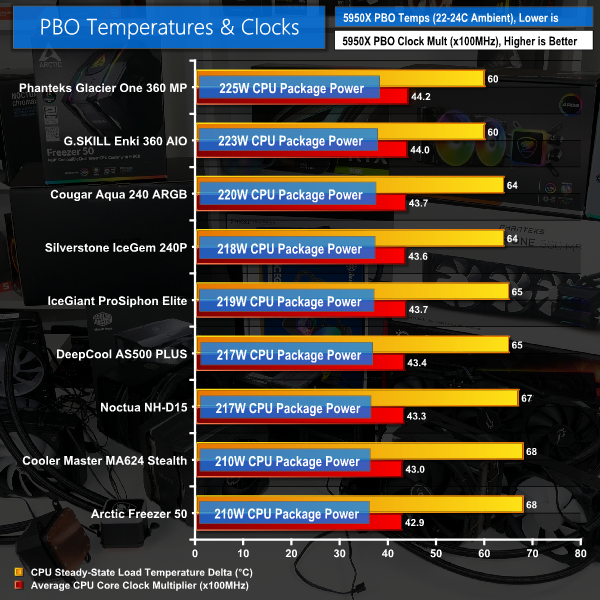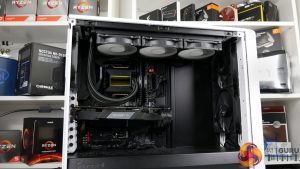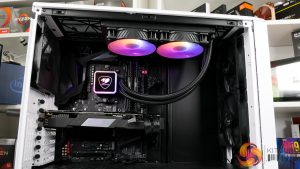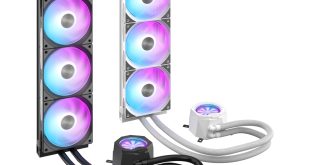We won’t put too much emphasis on PBO results, but we will spend some time to quickly analyse them using our full fan speed data.
With 90C the maximum target temperature for PBO, we are looking for the cooler that achieves the balance between lower temperature operation and higher PBO clock speeds. Higher clocks with lower temperatures are better. But one cooler may run at slightly higher temperatures than another, albeit with higher clock speeds, so look out for that.
In essence, this test is showing us how far the coolers can be pushed while keeping a sensible 90C maximum. Or whether there is more room for pushing clocks and power delivery beyond the PBO limits while still sticking to a 90C target.
The 360mm AIOs, yet again, steal the show here. This is thanks to their abilities to move the concentrated heat load away from the Ryzen CPU whilst also dissipating the energy across a large surface area with high-speed fans.
Cougar’s 240mm cooler does particularly well by beating out the package power tolerated and CPU clocks achieved versus the Silverstone 240mm. And the IceGiant ProSiphon Elite joins the DeepCool AS500 Plus at the front of the air-cooling pack with full speed fans. But IceGiant’s bigger unit is better thanks to its 400MHz higher operating clock. The ProSiphon Elite is realistically batting on 240mm AIO levels.
Noctua’s NH-D15 bounces back-and-forth on the 90C limit with a clock speed of around 4330MHz. While the Cooler Master and Arctic dual tower models are glued to the 90C limit and reduce the CPU package power and operating clock accordingly.
While the big AIOs still manage to win in this test, we do see gaps that are much narrower between AIO and air cooler performance. This implies that the more sensible heat load applied by the PBO mode does not stress the air coolers as hard as our manual overclock does.
It also emphasises that a better cooler can indeed deliver lower temperatures plus higher clock speeds, as shown by the 360mm AIOs. Even though the bumps in operating clocks are relatively small but certainly not to be dismissed.
We can quickly brush over the stock test results as the roughly 129W package power from our 5950X is not high enough to stress any of these coolers properly. Plus, the PB2 algorithm means that the temperature levels are all very similar as the clock speeds change dynamically.
Even with the PB2 shackles and low power output from the chip, we see all coolers at 100% fan speed hovering around 54-56C with clock speeds between 3870 and 3910MHz. Yes, these results do highlight that the big 360mm Phanteks AIO handles things better than the lower fan speed air coolers, for example. But the differences are pretty much insignificant – all coolers deliver satisfactory performance here.
 KitGuru KitGuru.net – Tech News | Hardware News | Hardware Reviews | IOS | Mobile | Gaming | Graphics Cards
KitGuru KitGuru.net – Tech News | Hardware News | Hardware Reviews | IOS | Mobile | Gaming | Graphics Cards





